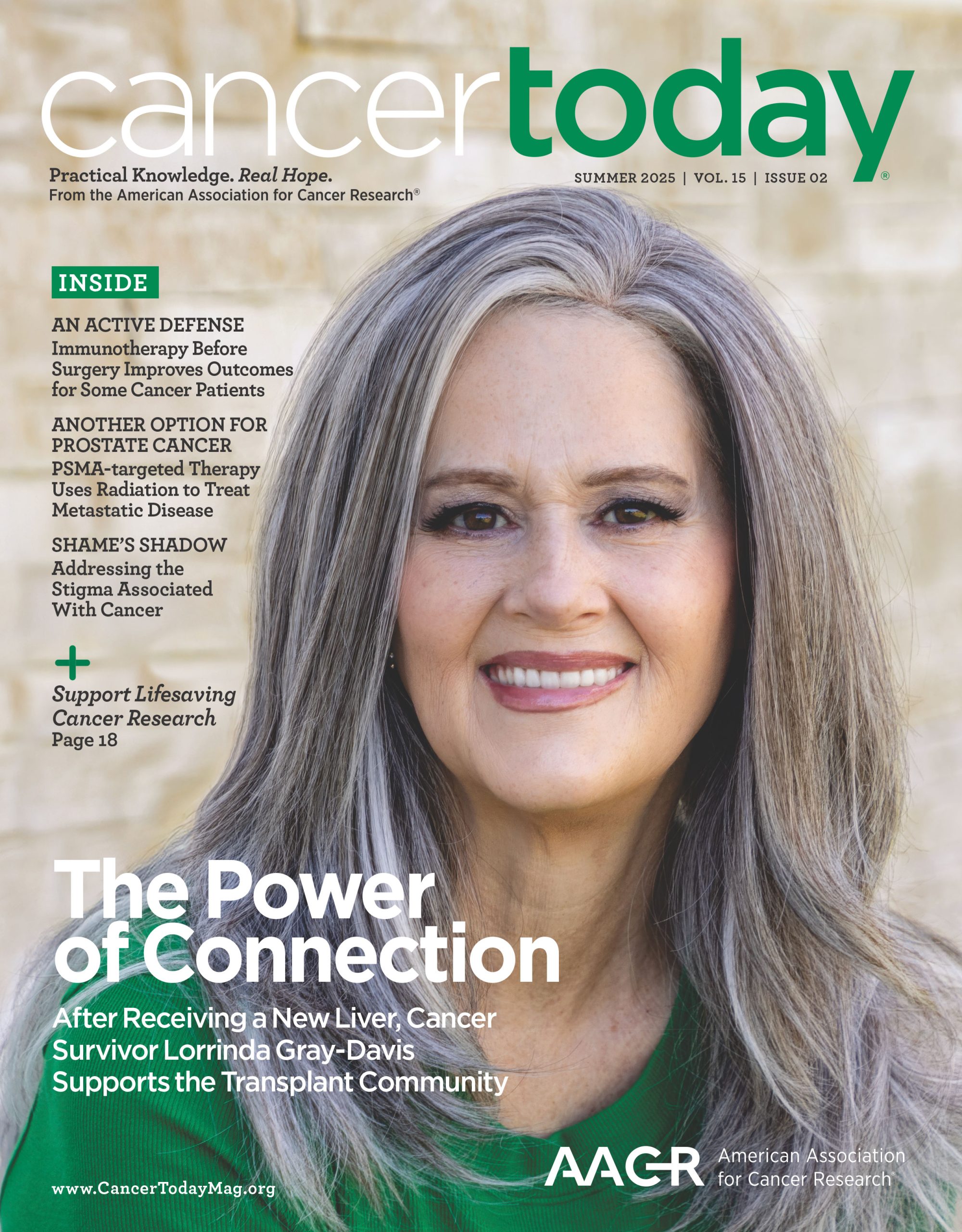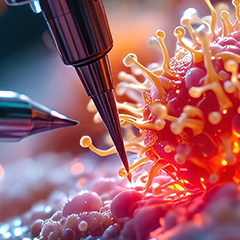Every week, the editors of Cancer Today magazine bring you the top news for cancer patients from around the internet. Stay up to date with the latest in cancer research and care by subscribing to our e-newsletter.
For Cancer Risk, Exercise Matters
Two studies published in the British Journal of Sports Medicine add muscle to current exercise recommendations for cancer survival and prevention, according to a Guardian article published this week. One research review, which included 42 studies and nearly 47,000 people with cancer, showed people who had greater muscle strength and higher cardiovascular fitness levels had a lower risk of dying from any cause compared with those who had less muscle mass and lower fitness levels. This combination of strength and fitness was associated with an 8% to 46% lower risk of death from any cause in patients with stage III or IV cancer, and a 19% to 41% lower risk of death from any cause among those with lung or digestive cancers. “Our findings highlight that muscle strength could potentially be used in clinical practice to determine mortality risk in cancer patients in advanced stages and, therefore, muscle strengthening activities could be employed to increase life expectancy,” the researchers wrote. The second study examined the records of more than 315,000 people, including almost 30,000 who developed cancer. After a median follow-up of 11 years, those who had slimmer waistlines and higher fitness levels were found to have reduced cancer risk.
Experimental Radiation Therapy Makes a FLASH
Many modern radiation approaches deliver precise and targeted radiation treatment, which can be delivered in less time than conventional radiation. However, researchers are studying an experimental radiation technology, called FLASH, that takes the concept to a new level, delivering much higher doses of radiation in less than a second, the BBC reports. Several early-stage trials, including one in children with bone metastases and another in people with recurrent head and neck cancer, are exploring whether the treatment carries less risk of devastating side effects. While it’s still an experimental approach, this type of radiation may not be readily available to everyone who needs it even if it is approved, critics note. Only facilities with complex particle accelerators—which require significant expense—are testing the approach, the BBC reports. Still, the long-term goal is to design an approach that can be used in any hospital that provides radiation, said André-Dante Durham Faivre, a radiation oncologist at Geneva University Hospitals, which is developing the technology. “We believe that X-ray Flash machines could in time replace existing conventional X-ray machines,” Faivre told the BBC.
FDA Approves Nicotine Patches Despite Concerns From Critics
The Food and Drug Administration authorized the marketing of 20 Zyn nicotine pouch products, with flavors such as coffee, mint and menthol, amid heavy criticism from antismoking groups. Nicotine pouches are small bags that contain nicotine and flavoring that can be placed between the gum and lip. These products have gained popularity as a smokeless alternative to traditional tobacco products and make up the fastest-growing segment of the U.S. tobacco market, AP reports. Those who support the use of the products suggest the pouches work similarly to nicotine gum, lozenges and other smoking cessation products. But critics express worry that the pouches—and the flavoring—will carry appeal for young people. “The FDA should not be authorizing the sale of any flavored tobacco products given the tobacco industry’s well-documented history of using flavored products to appeal to and addict kids,” said Yolonda Richardson, of the Campaign for Tobacco-Free Kids, in a statement.
Cancer Today magazine is free to cancer patients, survivors and caregivers who live in the U.S. Subscribe here to receive four issues per year.





